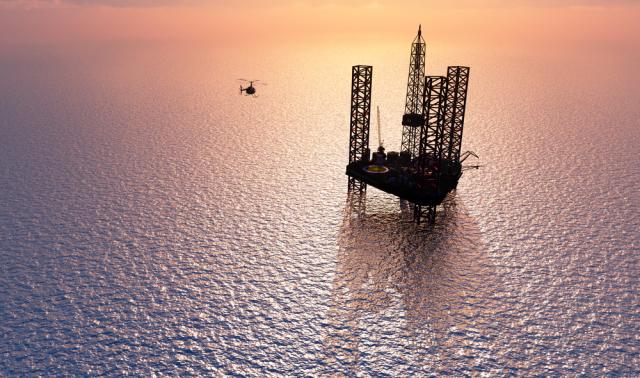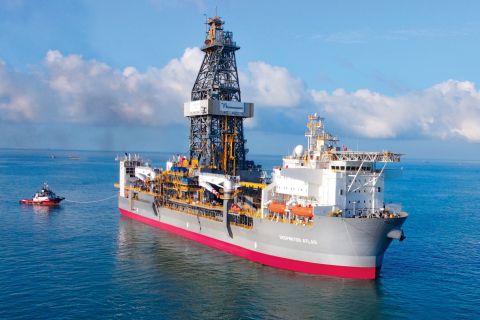
Chevron Corp. dominated the first Gulf of Mexico offshore lease sale in 17 months on March 29. (Source: Shutterstock)
Chevron Corp. dominated the first Gulf of Mexico offshore lease sale in 17 months on March 29, accounting for 41% of the $264 million in winning bids as it secured tracts in the Keathley and Green Canyons.
Thirty-two companies submitted 353 bids totaling $309 million on 313 tracts covering 1.6 million acres, the Bureau of Ocean Energy Management said. Other top bidders included BP, Shell, Equinor, Exxon Mobil, Beacon Offshore, Anadarko Petroleum and Hess.
The sale was required by the Inflation Reduction Act of 2022 and was termed “needlessly overdue” by Erik Milito, president of the National Ocean Industries Association (NOIA).
“Companies need lease opportunities to explore and potentially develop domestic energy resources,” Milito said in a press release.
Sale 259 offered 13,600 blocks across 73.3 million acres on the U.S. Outer Continental Shelf.
Oil and gas majors bid on 70% of the available blocks and accounted for 77% of the total high bids. Exxon Mobil added 69 blocks to its Gulf of Mexico lease holdings, while Chevron’s $108 million in high bids represented more than the other majors combined.
The sale also attracted controversy.
A lawsuit led by environmentalist group Earthjustice was filed earlier this month “to vacate the unlawful decision to hold Lease Sale 259 and to vacate or enjoin any leases issued or actions taken pursuant to the unlawful Lease Sale 259.”
The plaintiffs in the suit said the sale, which is predicted to result in production of 1.12 Bbbl and 4.4 Tcf of natural gas over the next 50 years, violates the National Environmental Protection Act (NEPA) and the Administrative Procedure Act (APA). The sale could result in the emission of 381,517 tons of CO2-e over the life of the projects.
An Earthjustice statement said the “excessive and reckless scope of today’s oil and gas lease sale demonstrates how badly our federal leasing program needs reform.” It described the sale as unlawful and said the Biden administration is “succumbing to the wants of a profit-rich industry over the well-being of Gulf communities, vital ecosystems and our urgent climate goals.”
The American Petroleum Institute (API) responded in a press release that the Gulf of Mexico is best positioned to deliver energy needs while supporting goals for lower carbon emissions.
Milito echoed those sentiments, saying “operations in the U.S. Gulf of Mexico adhere to the highest safety and environmental standards. The multitude of companies involved in offshore energy development are working collaboratively to shrink an already small carbon footprint.”
He added that oil produced from the Gulf has a carbon intensity one-half that of other producing regions, and the technologies used in deepwater production place the Gulf of Mexico among the lowest carbon intensity oil-producing regions in the world.
The number of bids increased 38% from Lease Sale 257, the previous Gulf of Mexico lease sale. The number of deepwater blocks that received bids increased by 30%. Chevron had the highest bid of the sale and the highest bid since 2019, spending $15 million on Keathley Canyon block 96.
Atwater Valley block 6 and Mississippi Canyon block 386 were the most sought-after blocks with four bids each. They were won by Shell and Murphy, respectively.
“While today’s lease sale is a belated but positive step toward a more energy-secure future, it should not take an act of Congress to get us to this point. Continued production in the Gulf of Mexico is essential for delivering the energy the world needs while supporting lower carbon goals,” Holly Hopkins, vice president of Upstream Policy at API, said. “It is well past time for the Department of the Interior to finalize a five-year program for federal offshore leasing that will empower U.S. energy producers to meet the needs of consumers here at home and around the world.”
Recommended Reading
CEO: Continental Adds Midland Basin Acreage, Explores Woodford, Barnett
2024-04-11 - Continental Resources is adding leases in Midland and Ector counties, Texas, as the private E&P hunts for drilling locations to explore. Continental is also testing deeper Barnett and Woodford intervals across its Permian footprint, CEO Doug Lawler said in an exclusive interview.
Chevron Hunts Upside for Oil Recovery, D&C Savings with Permian Pilots
2024-02-06 - New techniques and technologies being piloted by Chevron in the Permian Basin are improving drilling and completed cycle times. Executives at the California-based major hope to eventually improve overall resource recovery from its shale portfolio.
Rystad: More Deepwater Wells to be Drilled in 2024
2024-02-29 - Upstream majors dive into deeper and frontier waters while exploration budgets for 2024 remain flat.
For Sale, Again: Oily Northern Midland’s HighPeak Energy
2024-03-08 - The E&P is looking to hitch a ride on heated, renewed Permian Basin M&A.
To Dawson: EOG, SM Energy, More Aim to Push Midland Heat Map North
2024-02-22 - SM Energy joined Birch Operations, EOG Resources and Callon Petroleum in applying the newest D&C intel to areas north of Midland and Martin counties.






